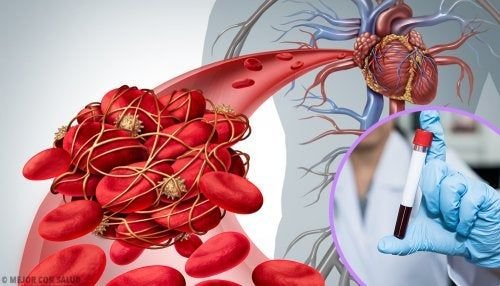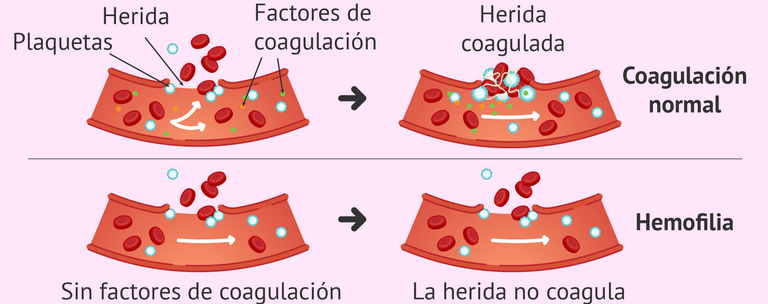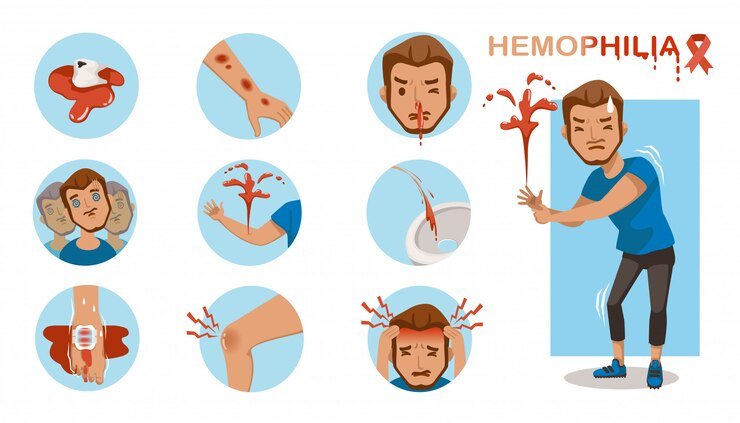Hemofilia: Una enfermedad poco común.

Estimados amigos, les saludo con cariño y entusiasmo, agradeciendo a Dios por un día más, y a la plataforma por el apoyo constante. Gracias por el cariño y la aceptación.
Mi tiempo se me ha reducido drásticamente por el postgrado y la carga de trabajo, sin embargo intento mantener el ritmo de los post y distraerme con las diferentes publicaciones llenas de talento que esta plataforma ofrece, un abrazo.
El día de hoy escribiré un poco sobre: Hemofilia.
Hace un par de días, recibimos en el servicio de Medicina Interna del hospital donde hago vida, un caso poco frecuente. Se trataba de un paciente masculino de 23 años de edad que padecía hemofilia.
La prevalencia de esta "extraña enfermedad" en el mundo es de 1 en 5.000 hombres, por lo tanto el paciente llamó mi atención en seguida, y me puse a disposición de mis residentes superiores para formar parte del equipo médico tratante, recibiendo respuesta positiva.
Les cuento un poco sobre esta patología:
La Hemofilia es un transtorno sanguíneo, de tipo hereditario donde se ve afectada la coagulación del paciente ocasionando hemorragias (internas o externas) excesivas en el individuo después de algún corte, herida o lesión.

Esta rara enfermedad fue descrita por primera vez en el año 1803 por John C. Otto, un Médico Estadounidense, quien pública una investigación llamada "Recuento de una disposición hemorrágica existente en ciertas familias". En ella detalla, que el sexo femenino no presentaba signos de esta afección, sin embargo podían ser portadoras y transmitían a sus hijos o nietos masculinos la enfermedad.
Por años, esta enfermedad fue llamada "La enfermedad de la realeza", ya que en el año 1837 la reina Victoria, de Inglaterra, padecía de Hemofilia, sin embargo se encontraba clínicamente estable, sin embargo sus hijos varones sí se vieron afectados igual que sus nietos del sexo masculino.
La teoría anterior quedó deshecha al manifestarse con el tiempo, individuos afectados independientemente de su estatus social.
Hoy en día, y con los avances tecnológicos y diferentes estudios, se ha demostrado que esta patología afecta al cromosoma X, es allí donde se produce un cambio o mutación de gen, afectando directamente la orden a las proteínas encargadas de la coagulación sanguínea, que se ven vulneradas al momento de detener una hemorragia.
Síntomas:
Dolores en músculos o articulaciones, cefalea, hematomas que salen sin razón aparente, hemorragias nasales, hemorragias en encías, a través de orina y heces, además al momento de una lesión, corte o herida el paciente, sangra de manera severa siendo muy difícil detener el sangrado.

Diagnóstico:
El diagnóstico se debe hacer a través de la anamnesis detallada, donde se pongan de manifiesto los antecedentes personales y los familiares, asimismo la clínica presentada por el paciente, dónde se debe prestar principal atención a las lesiones en piel, el riego sanguíneo y la capacidad que tiene el paciente de coagular si acude por hemorragia.
Asimismo se indicarán exámenes completarios dentro de los cuales estarán: Hematología Completa, donde se prestará mucha atención a la hemoglobina del paciente, además laboratorios de tipos de coagulación PT y PTT, donde de ser positiva, la patología se verán prolongados.
De igual forma, se recomienda analizar los análisis específicos para factor VIII y IV.
Tratamiento:
Actualmente, es una enfermedad que no tiene cura, pero se puede vivir con ella brindando al individuo un tratamiento sintomático para evitar complicaciones.
El tratamiento va a depender de la gravedad de la hemorragia, aunque básicamente es tratada con hormonas, e inyecciones de plasma o factor de coagulación, además de selladores de fibrinógeno, y fisioterapia para aliviar dolores.
En casos graves el equipo médico multidisciplinario iscutirá y determinará la terapia adecuada.
Es importante resaltar que como personal de salud, debemos pensar que cada paciente es un mundo, que muchas veces debemos descubrir, comprender. Es importante abordar con buena disposición e ir más allá para poder diagnosticar este tipo de enfermedades llamadas "raras", y es que la vida de un paciente está en nuestras manos, es por ello que debemos dar lo mejor de nosotros.
Gracias.
Dios siempre de Cabrestero.
English.
Dear friends, I greet you with love and enthusiasm, thanking God for another day, and the platform for the constant support. Thank you for the love and acceptance.
My time has been drastically reduced by the graduate degree and the workload, however I try to keep up the pace of the posts and distract myself with the different publications full of talent that this platform offers, a hug.
Today I will write a bit about: Hemophilia.
A couple of days ago we received in the internal medicine department of the hospital where I live a rare case, it was a 23 year old male patient suffering from hemophilia.
The prevalence of this "strange disease" in the world is 1 in 5,000 men, so the patient caught my attention right away, and I made myself available to my senior residents to be part of the treating medical team, receiving a positive response.
I will tell you a little about this pathology:
Hemophilia is a hereditary blood disorder where the patient's coagulation is affected causing excessive bleeding (internal or external) in the individual after a cut, wound or injury.
This rare disease was described for the first time in 1803 by John C. Otto, an American doctor, who published an investigation called "Account of a hemorrhagic disposition existing in certain families" in which he detailed that the female sex did not present signs of this condition, however, they could be carriers and transmit the disease to their sons or male grandchildren.
For years this disease was called "The disease of royalty", since in 1837 Queen Victoria, of England, suffered from Hemophilia, however she was clinically stable, but her sons were affected as well as her male grandchildren.
The previous theory was undone when, with time, affected individuals manifested themselves independently of their social status.
Nowadays, and with technological advances and different studies, it has been demonstrated that this pathology affects the X chromosome, it is there where a gene change or mutation occurs, directly affecting the order to the proteins in charge of blood coagulation, which are violated at the moment of stopping a hemorrhage.
Symptoms:
Pain in muscles or joints, headache, bruises that come out for no apparent reason, nosebleeds, bleeding gums, through urine and feces, also at the time of an injury, cut or wound the patient, bleeds severely being very difficult to stop the bleeding.
Diagnosis:
The diagnosis should be made through detailed anamnesis, where personal and family history is revealed, as well as the clinic presented by the patient, where the main attention should be paid to skin lesions, blood supply and the patient's ability to clot if he/she comes for bleeding.
Likewise, complete examinations will be indicated among which will be: Complete hematology, where much attention will be paid to the patient's hemoglobin, in addition to laboratories of coagulation types PT and PTT, where if the pathology is positive will be prolonged.
Similarly it is recommended to analyze the specific analysis for factor VIII and IV.
Treatment:
Currently it is a disease that has no cure, but it is possible to live with it by providing the individual with a symptomatic treatment to avoid complications.
The treatment will depend on the severity of the hemorrhage, although it is basically treated with hormones and injections of plasma or coagulation factor, in addition to fibrinogen sealants and physiotherapy to relieve pain.
It is important to emphasize that as health personnel, we must think that each patient is a world, which we often have to discover and understand. It is important to approach with good disposition and go beyond to be able to diagnose this type of diseases called "rare", and is that the life of a patient is in our hands, that is why we must give the best of us.
Thank you.
God always of Cabrestero.
Su post ha sido valorado por @ramonycajal